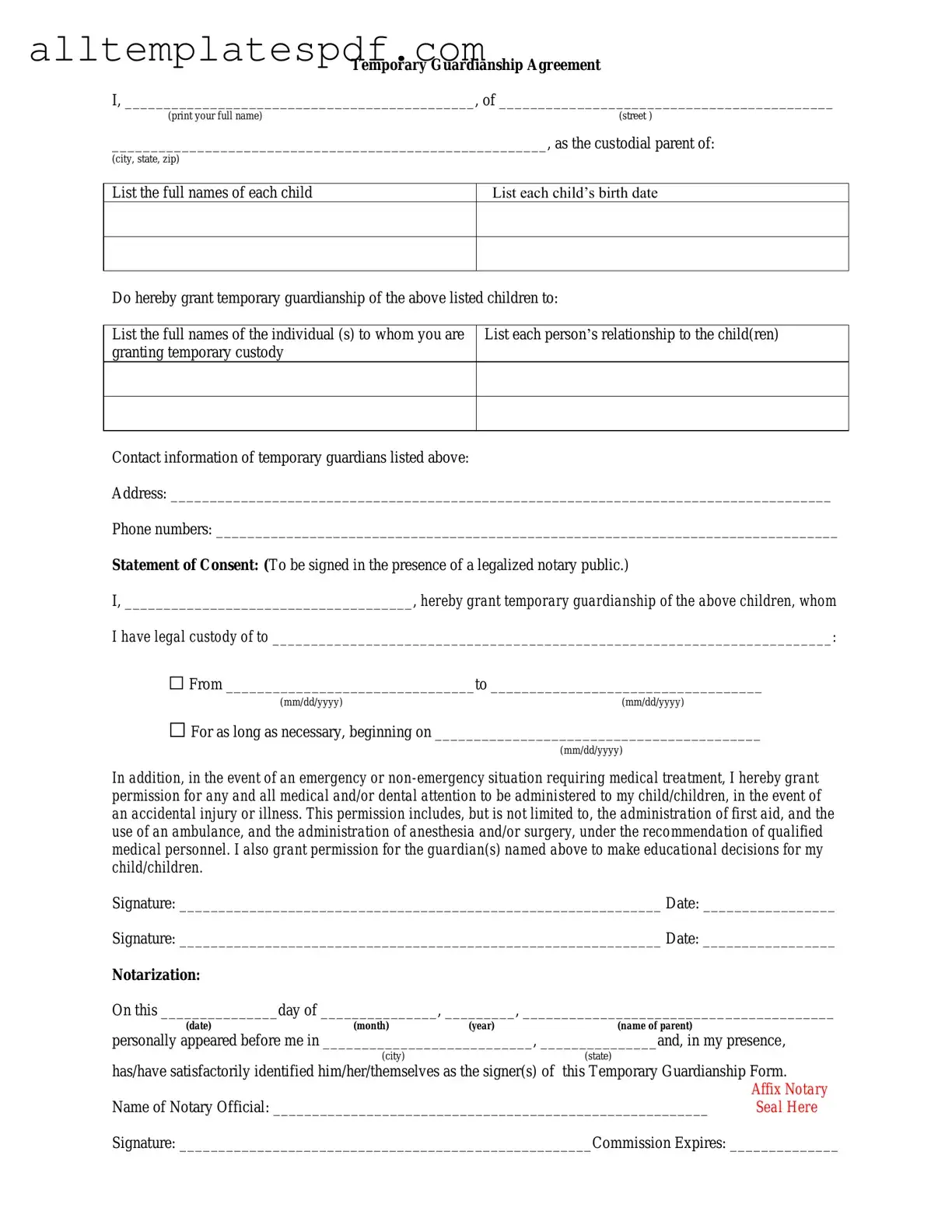Filling out the Temporary Custody form can be a daunting task. Many people make common mistakes that can lead to delays or complications in their custody arrangements. Understanding these pitfalls can help ensure a smoother process.
One frequent error is incomplete information. When individuals fail to provide all required details, it can result in the form being rejected or returned for corrections. It is crucial to read through the form carefully and ensure that every section is filled out completely. Missing even a single piece of information can create unnecessary hurdles.
Another mistake is using unclear language. When describing circumstances or reasons for seeking temporary custody, vague or ambiguous language can lead to misunderstandings. It’s important to be as clear and specific as possible. Clear explanations help the reviewing party understand the situation better.
People often forget to sign and date the form. A signature is not just a formality; it confirms that the information provided is accurate to the best of one’s knowledge. Without a signature, the form is incomplete and cannot be processed. Always double-check to ensure that the form is signed and dated before submission.
Additionally, some individuals overlook the importance of providing supporting documentation. Relevant documents, such as proof of residency or evidence of the child’s needs, can strengthen a case for temporary custody. Failing to include these documents can weaken the application and may lead to a denial.
Another common issue is not following the submission guidelines. Each jurisdiction may have specific requirements for how the form should be submitted, including where to send it and any associated fees. Ignoring these guidelines can cause delays or result in the application being rejected.
People sometimes make the mistake of not keeping copies of their submitted forms. It is essential to retain a copy for personal records. This way, if there are any questions or issues later on, you have the original information at hand for reference.
Lastly, many individuals fail to seek assistance when needed. Filling out legal forms can be complex, and it’s perfectly acceptable to ask for help from professionals or trusted individuals. Seeking guidance can prevent many of the mistakes mentioned and ensure that the form is filled out correctly.
